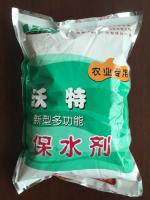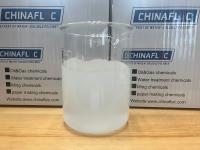Our Products
Product Center / super absorbent polymer models from LG CHEM BASF SE can be replaced by Chinafloc--SAP
534_small.jpg)
super absorbent polymer models from LG CHEM BASF SE can be replaced by Chinafloc--SAP
Superabsorbent polymers (SAPs) are water-absorbing materials with the capability to retain large amounts of liquid relative to their own mass. These polymers can absorb several hundred times their weight in water, turning into a gel-like substance upon absorbing the liquid. The unique characteristics of SAPs make them indispensable across a variety of industries, including hygiene, agriculture, medical, and industrial sectors. This article will explore the main applications of SAPs in a comprehensive 1350-word format.
1. Hygiene Products
The most well-known and widespread use of superabsorbent polymers is in personal hygiene products, where they significantly enhance the absorbency of items like baby diapers, adult incontinence products, and sanitary napkins.
a. Baby Diapers
The largest application of SAPs is in the production of baby diapers. In modern disposable diapers, SAP is used to capture and retain urine, keeping the baby’s skin dry and reducing the likelihood of diaper rash. The SAP particles are embedded in the diaper's core and help absorb liquid, turning it into a gel and preventing it from leaking out. This high absorption capacity reduces the bulk of the diaper and allows for longer usage between changes, making diapers more convenient for parents.
Advancements in SAP technology have led to the production of thinner and more efficient diapers, offering better comfort and mobility for babies while still maintaining high absorbency. As birth rates rise in many parts of the world, especially in developing countries, the demand for diapers and, consequently, SAPs continues to grow.
b. Adult Incontinence Products
Incontinence affects millions of adults, especially the elderly, leading to an increased demand for absorbent products like adult diapers, incontinence pads, and pull-up pants. These products rely heavily on SAPs for liquid absorption and retention. Just like in baby diapers, the SAP in adult incontinence products transforms liquid into a gel, which helps in reducing leaks and keeping the skin dry. This application is particularly important as it improves the quality of life for individuals dealing with incontinence, providing them with a discreet, efficient solution for managing their condition.
c. Sanitary Napkins
Sanitary napkins or pads are another key hygiene product that utilizes SAP technology. SAPs are used in the absorbent core of sanitary pads to trap menstrual fluid, keeping the surface dry and reducing the risk of leakage. The polymer's ability to absorb and retain liquid allows for longer wear time, reducing the frequency with which users need to change their pads. The use of SAP in feminine hygiene products has transformed the market, offering higher absorbency levels and thinner products that are more comfortable to wear.
2. Medical Applications
Superabsorbent polymers also find use in various medical applications due to their ability to absorb and retain large quantities of bodily fluids.
a. Wound Dressings
SAPs are increasingly being used in advanced wound care products, particularly in wound dressings designed to manage exudating wounds. In such dressings, the SAP is used to absorb wound exudates, keeping the wound environment moist while preventing maceration of the surrounding skin. This controlled moisture environment is beneficial for faster wound healing, as it promotes cell growth and tissue regeneration.
b. Surgical Pads
SAPs are also used in surgical pads and drapes to absorb large quantities of fluids during surgical procedures. These materials help to maintain a clean and dry surgical field, enhancing the efficiency of the procedure and reducing the risk of infection. Additionally, SAP-based pads can be used post-surgery to absorb excess fluids and prevent leakage, further contributing to patient recovery.
c. Medical Waste Solidification
Another important medical application of SAPs is in the solidification of liquid medical waste. SAPs are used to quickly absorb and contain potentially hazardous liquids, turning them into a solid gel that is easier to handle, transport, and dispose of. This is particularly useful in medical facilities, where the management of biohazardous waste is critical for maintaining sanitary and safe conditions.
3. Agriculture
The agricultural sector is increasingly adopting superabsorbent polymers to address water management challenges. In areas prone to drought or water scarcity, SAPs offer a solution to improve soil moisture retention and enhance crop yields.
a. Water Retention in Soil
SAPs can be mixed with soil to improve its water-holding capacity. When the SAP absorbs water, it swells into a gel that releases moisture slowly over time. This helps to provide plants with a consistent water supply, especially in arid regions or during dry seasons. By retaining water in the soil, SAPs help to reduce the frequency of irrigation, lower water consumption, and promote healthier plant growth.
Farmers are increasingly using SAPs to improve crop productivity, especially in areas where water is a limiting factor. The ability to reduce irrigation needs also makes SAPs an environmentally friendly solution, helping to conserve water and reduce the pressure on local water resources.
b. Seed Coating
In seed coating applications, SAPs are used to enhance germination rates and early plant growth. By coating seeds with a thin layer of SAP, the seed can absorb and retain moisture from the surrounding soil. This promotes quicker and more uniform germination, which is especially important in dry or semi-arid environments where moisture availability may be inconsistent.
c. Hydrogel in Fertilizer
In some cases, SAPs are combined with fertilizers to create hydrogel-based products that slowly release both water and nutrients to the plants. This controlled-release system ensures that plants receive a consistent supply of essential nutrients over time, improving plant health and reducing nutrient runoff into nearby water sources.
4. Construction and Infrastructure
In construction and civil engineering, SAPs are used in a variety of applications to improve materials and processes.
a. Concrete
One of the primary uses of SAPs in the construction industry is in concrete admixtures. When added to concrete, SAPs absorb water and release it gradually as the concrete cures. This controlled release of moisture helps to improve the curing process, reducing the risk of cracking and increasing the strength and durability of the concrete. SAP-modified concrete is especially useful in large-scale construction projects where proper curing is essential for long-term structural integrity.
b. Waterproofing
SAPs are also used in waterproofing materials, such as membranes and sealants. Their ability to absorb and retain water makes them ideal for applications where moisture control is critical, such as in basements, tunnels, and water storage facilities. By integrating SAPs into these materials, engineers can improve the water resistance and longevity of structures exposed to moisture.
5. Industrial Applications
Superabsorbent polymers have found a place in various industrial applications due to their ability to absorb and retain liquids.
a. Oil and Gas Exploration
In the oil and gas industry, SAPs are used in drilling fluids to improve the management of water-based drilling waste. When SAPs are added to drilling muds, they help to solidify liquid waste, making it easier to handle and dispose of. This reduces the environmental impact of drilling operations and helps to ensure compliance with environmental regulations.
b. Cable Wrapping
SAPs are used in the manufacturing of fiber optic and telecommunications cables to provide protection against water ingress. In cable wrapping applications, SAPs are incorporated into the sheathing material, where they absorb any water that enters the cable and swell to create a barrier that prevents further moisture penetration. This helps to protect the sensitive inner components of the cable and prolong its operational lifespan.
c. Packaging Materials
In the packaging industry, SAPs are used to create absorbent pads for food packaging, particularly in meat and poultry products. These pads are placed at the bottom of the packaging to absorb any excess liquid, preventing spoilage and maintaining the freshness of the product. The use of SAP-based absorbent pads has become a standard practice in the food industry to ensure that products remain dry and fresh during transportation and storage.
6. Environmental Cleanup
Superabsorbent polymers are also used in environmental cleanup applications, particularly in the management of spills and leaks.
a. Oil Spill Cleanup
SAPs can be used to absorb and contain oil spills in both marine and terrestrial environments. When applied to an oil spill, the SAP absorbs the oil and transforms it into a gel, which can then be easily removed from the affected area. This application is particularly useful in emergency response situations, where quick and efficient containment of hazardous materials is essential to minimize environmental damage.
b. Hazardous Waste Containment
In the management of hazardous waste, SAPs are used to solidify liquids and prevent them from spreading. This is especially important in the containment of chemical spills or leaks, where the risk of contamination is high. By absorbing and immobilizing hazardous liquids, SAPs help to reduce the risk of environmental contamination and improve the safety of cleanup operations.




